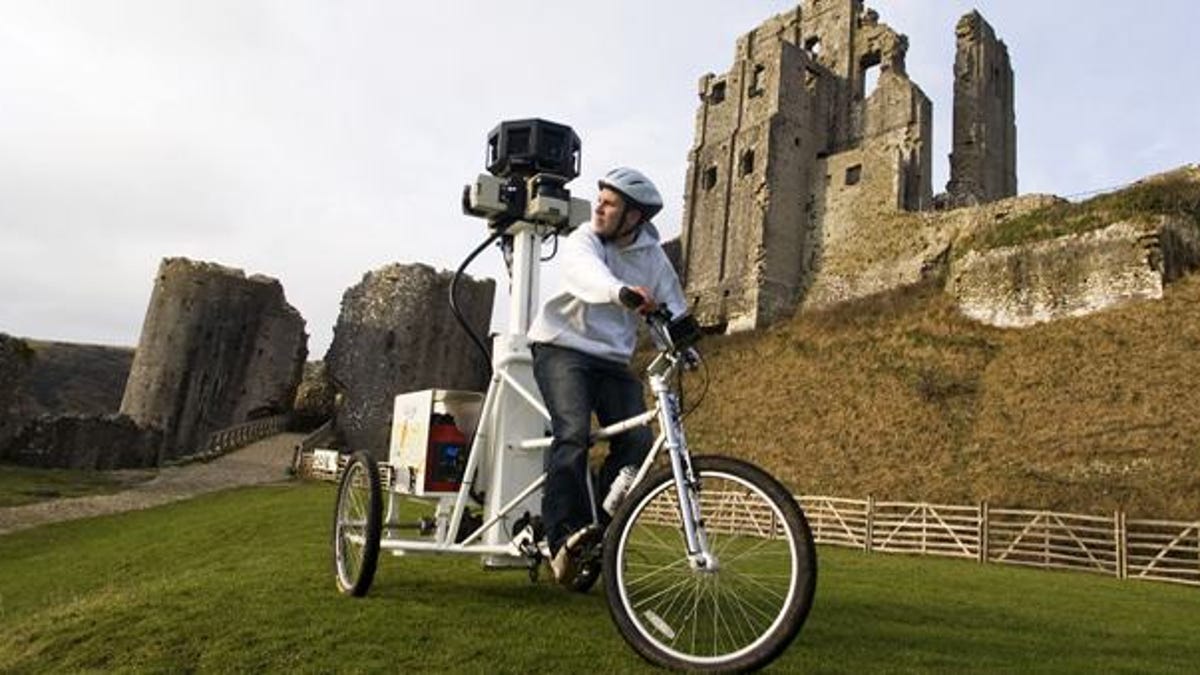Google Street View welcomes me to the U.K.
Online explorers can see several historic British sites. But newly relocated to the U.K., Stephen Shankland would prefer more ordinary Street View coverage.

WINDSOR, U.K.--How opportune.
Just as I arrived as a transplant to England for a spell, Google added tours of 20 National Trust historic sites to Google Maps Street View.
I've long been a proponent of virtual tourism over the Internet, whether for planning an actual visit or just exploring other places virtually, so I'm happy about Google's partnership with the National Trust. The organization takes care of many historic sites in the United Kingdom, including assorted stately homes, the prehistoric stone circle at Avebury, and Lindisfarne Castle, where I was assaulted by territorial terns as a boy.
Google said 20 National Trust sites are now on Street View, and the National Trust said that more are coming, including a personal favorite, the Giant's Causeway in Northern Ireland. The tours let virtual visitors click linearly through the sites--a plodding and limited way to explore compared with roaming freely around the actual sites, but still good enough to be useful.
However, less than 48 hours after arriving at new lodgings in Windsor, about 20 miles west of central London, I have to say that I'm pining more for the online mapping basics than the ability to see highlights of English culture.
Specifically, Street View has yet to help me around Windsor, and I've had occasion to want the down-to-Earth view more than once. Also, my current address, one of those peculiar British ones with a flat number but not street number, seems to give Google Maps parsing indigestion. (The standard form the U.S. Postal Service supplies must be a blessing for computer processing.)
I was disappointed by the absence of nearby grocery stores as revealed through a Google Maps search, but then found one close while on foot. And Google Maps' public transportation doesn't know about the best train to get me to CNET's London offices.
Evidently I've been spoiled by the relatively rich online geographic results that Google and others supply for the San Francisco Bay Area.
What am I doing here exactly? The same thing as I did in the United States, mostly: writing about browsers, technology trends, digital photography, and other matters that strike my fancy. Now, though, I'll be adding some coverage to Deep Tech about technology in Europe, too.
So consider this my first hands-on view of tech away from the United States.
Though I have my gripes with Google's mapping, overall it's hard to complain too vigorously. My son's school was misplaced on Google Maps, but the fact remained that Google Maps through an iPhone got me pretty close, and a scan of the satellite view took me the last couple hundred yards. By comparison, the rental car's GPS device was useless since it required the school's address.
In the bigger picture, it's inconceivable to me how a person would move to a different country these days without Internet services. Here's a much-curtailed list of how the Net helped me get here and get settled: finding bike store locations and bicycle prices, comparison shopping for airfares, searching for accommodations, and figuring out how to dispose of my old phone and what to get next.
The last time I lived in Blighty, more than 25 years ago, I kept in touch with folks in the States via air mail. This time, the second day here, my family has already had a video chat with my mother-in-law over Skype. There are plenty of obstacles to foreign travel, but the Net has lowered them dramatically.

